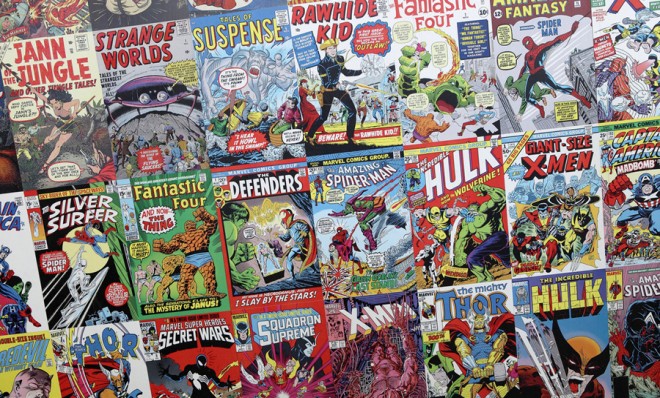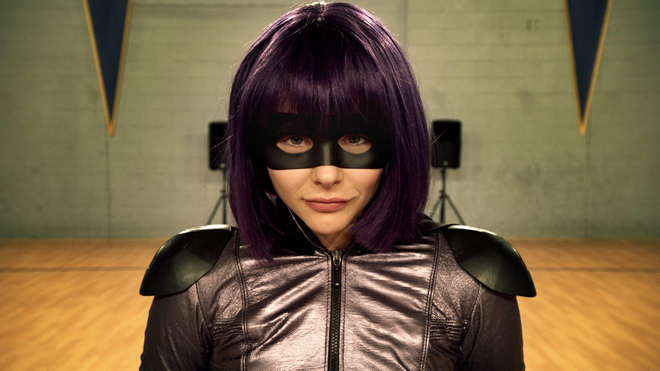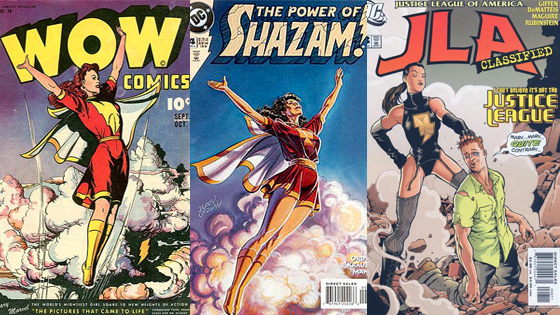Girls on Film: How sexism is destroying the comic book industry
Even as superheroes thrive at the box office, comics creators continue to employ sexist and misogynistic depictions of women


If the summer blockbuster lineup is any indication, comic books should be in the midst of a cultural boom and creative renaissance. The year's most popular blockbusters include Iron Man 3, Man of Steel, and The Wolverine, and this weekend's Kick-Ass 2 — the second movie based on Mark Millar's controversial and popular comic book series — looks to extend the stranglehold superheroes have on movie theaters.
The comics from which these superheroes are born are fantasy, but they are often anchored in truth. And they offer a unique method of storytelling that has, historically, appealed across gender, race, and culture. But if "the potential of comics is limitless and exciting" — as leading comics theorist Scott McCloud once wrote — why do so many of the leading male comics creators treat them as such a narrow and static format?
Earlier this month, The New Republic published an in-depth interview with Millar, in which he argued that rape is equivalent to any other act of violence. "The ultimate [act] that would be the taboo, to show how bad some villain is, was to have somebody being raped, you know?" he said. "I don't really think it matters. It's the same as, like, a decapitation. It's just a horrible act to show that somebody's a bad guy." Millar went on to boast that he "always likes to push it and see something [he's] never seen before."
The Week
Escape your echo chamber. Get the facts behind the news, plus analysis from multiple perspectives.

Sign up for The Week's Free Newsletters
From our morning news briefing to a weekly Good News Newsletter, get the best of The Week delivered directly to your inbox.
From our morning news briefing to a weekly Good News Newsletter, get the best of The Week delivered directly to your inbox.
But Millar is wrong. We have seen rape in comics before, and we've seen it a lot. In fact, rape shows up repeatedly in Millar's work (Wanted, The Authority, Kick-Ass 2), which echoes a longer tradition of rape suffered by superheroines like Black Cat, Ms. Marvel, and Rogue. Rape is no more an unspeakable taboo in comics culture, where the industry is overrun with continual sexual harassment and rape threats, than it is in real life.
As Wired editor (and previous Comics Alliance editor-in-chief) Laura Hudson correctly argues, there's only one reason comics depict rape in the stories: To "piss off the male character. It's using a trauma you don't understand in a way whose implications you can't understand, and then talking about it as though you're doing the same thing as having someone's head explode. You're not. Those two things are not equivalent, and if you don't understand, you shouldn't be writing rape scenes."
Millar's comparison is the same false equivalency that plagues discourse on racial and sexual inclusivity in comics — stubborn, willful ignorance that blocks legitimate growth and critique. As Joseph Hughes noted at Comics Alliance, these continual plots of women being raped to incense male heroes are sold to societies in which rape is a widespread endemic. "In Scotland, where Millar resides, incidences of rape and attempted rape increased by 15 percent from 2011-12 to 2012-13. [...] These are not statistics one typically associates with decapitation."
And Millar is far from alone in his regressive viewpoints. Just a day after the interview with Millar was published, during the Television Critics Association press tour, famed comics creators Todd McFarlane (Spawn), Gerry Conway (The Punisher), and Len Wein (Wolverine) excused away questions about women and minorities in comics with a whirlwind of contradictory postulating.
A free daily email with the biggest news stories of the day – and the best features from TheWeek.com
This is also the same false equivalency that led McFarlane to argue that men's bodies are as stereotyped as women's bodies in comics — ignoring the fact that it's not just about skin, but about posture and action. (The Hawkeye Initiative puts the popular male superhero in the same positions as female superheroes to creatively illustrate this.) It's the same habit that led Len Wein, when asked about increasing diversity in comics, to argue: "I think every time you take a female character, a black character, a Hispanic character, a gay character, and make that the point of the character, you are minimalizing the character."
There is a rampant assumption that diversifying comics requires the characters to be defined by their diversity — a sad sentiment from Wein, who created Storm and stresses that superheroes should be written "as human beings." But diversity doesn't minimalize plot potential; in fact, it often expands it. It allows for an exploration of how a superhero navigates their difference in culture — not just as a person of immense strength, but as a person with different origins than the people they are surrounded by. Superman, for example, is an alien whose entire story focuses on his place in a foreign world — and he's one of comics' most iconic figures.

Before she became "one of the most objectionable characters in Daily Mail history," as Millar explained earlier this year, Kick-Ass' Hit Girl was a "sweet little character" born from Millar's desire to "create something for my daughter" who loved superheroes but had none she could emulate. Yet, when he noted the absence of good adult female superheroes in movies, and is asked if he would consider creating one, he argued: "I've no agenda. I always think it's a bit weird when a guy comes along and says, 'I've got a feminist agenda.'" Millar fails to realize that his original creation of Hit Girl was a feminist agenda; he noticed a "big gap in the market," and wanted to give his daughter a female superhero to fill it. The fact that Hit Girl subsequently became so popular just proves the demand for interesting female characters.
McFarlane, meanwhile, describes himself as the "guy who likes challenges" and turning a stereotype "on its head." But during the TCA panel, he wondered if comic books aren't "the right platform" for female-centric stories as they're a "high testosterone sort of storytelling." Though he considers "politic stuff and government stuff" part of the "Spawn mythos," he also argued that "there hasn't really been, historically, a comic book that has worked that is trying to get across a kind of message." It's a sentiment — as Noah Berlatsky at The Atlantic noted — that is categorically incorrect, both for comics' treatment of politics and, specifically, feminism.
Punisher co-creator Gerry Conway initially embraced the format's potential when talking about studios and origin stories during the TCA panel: "I think they missed the point that these characters can be plugged into almost any story structure. … They are modern myths so they can tell any story you want to." His tune quickly changed, however, when it came to diversifying comics. Conway argued that there are "inherent limitations" to superheroes — just like there are no female knights in medieval stories because, historically, there was only Joan of Arc (yes, really). He explained that his daughter only reads comic books by Faith Erin Hicks, "who writes stories that speak to her. So she's not interested in the guy stories" — audaciously ignoring the fact that Hicks has written about superheroes, alongside other usual comic fare like demons and zombies.
"The decision to stay within the narrow lanes of your own fantasies is a choice, not biological determinism," wrote Alyssa Rosenberg. Whether these men are actually sexist, their approach to comics — a medium which they continue to help define — clearly is. It isn't just a matter of what ends up on the page, but how they respond to their audience and critics. They are, quite clearly, discriminating and perpetuating a false discourse about diversity in comics — like the idea that politics, feminism, and strong heroines never sell. It's a strange rigidity coming from men who are paid to be creative and stretch the boundaries of their imaginations.
It's also a rigidity that's killing the genre. The comic book world is caught in a "death spiral." Sales are mere fractions of what they were — but instead of expanding the reach, many creatives are stubbornly narrowing it. "I have long maintained," Laura Hudson once wrote, "that to bring in more female readers, superhero comics don't even need to specifically target women as much as they need to not actively offend them. […] Female characters are only insatiable, barely dressed aliens and strippers because someone decided to make them that way. [...] It isn't an inviolable reality, especially in a comic book universe that has just been rebooted."
Creators will go as far as making Superman a Communist hero — as Millar did with the acclaimed limited series Superman: Red Son — but not change their fundamental approach to women and minorities. We're led to believe that this is the way comics are: That Mary Marvel was always the busty dominatrix type, and that she didn't spend decades rocking a power pose that would make Amy Cuddy proud. McFarlane swears that comics are for "a certain kind of group of people." That might be true for the old guard warping the genre into a narrow macho fantasy — but not for people like Eisner Award-winners Hope Larson and Fiona Staples, and certainly not historically. Comic books rest on a foundation that includes big-screen Superman, Spider-Man, and Captain America — but also Mary Marvel, Wonder Woman, and more.

"I know a little girl who wears her cardigan sweater buttoned once at the neck and flung back over her shoulders, the arms hanging free like dislocated wings," wrote Lovell Thompson, arguing for the appeal of comics to all people, in 1942. Comic books have always been a limitless genre that can resonate with any fan, and they can be that way again — as long as those fans are acknowledged and respected.
Girls on Film is a weekly column focusing on women and cinema. It can be found at TheWeek.com every Friday morning. And be sure to follow the Girls on Film Twitter feed for additional femme-con.
Monika Bartyzel is a freelance writer and creator of Girls on Film, a weekly look at femme-centric film news and concerns, now appearing at TheWeek.com. Her work has been published on sites including The Atlantic, Movies.com, Moviefone, Collider, and the now-defunct Cinematical, where she was a lead writer and assignment editor.
-
 A TikTok trend has Gen Z men leaving streetwear behind for more preppy attire
A TikTok trend has Gen Z men leaving streetwear behind for more preppy attireThe Explainer More than a zipper: Young Black men embrace the ‘quarter-zip movement‘
-
 Codeword: December 12, 2025
Codeword: December 12, 2025The daily codeword puzzle from The Week
-
 Sudoku medium: December 12, 2025
Sudoku medium: December 12, 2025The daily medium sudoku puzzle from The Week
